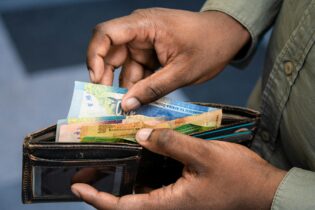2012 marked a period of continued achievement for the PET Plastic Recycling Company (PETCO) and its 28 signatories, contributing to the increased recovery and recycling of PET plastic beverage bottles and the diversion of material from landfill.
The organisation recently announced that post-consumer plastic beverage bottle recycling volumes in South Africa grew by 18% year on year in 2012. The recycling rate rose from 42% in 2011 to 45% in 2012, while the local market consumption of PET grew from 145 000 to 166 000 t. “By recycling 45% of post-consumer beverage PET, we achieved a full 1% more than what was targeted for 2012,” says Cheri Scholtz, CEO of PETCO. Recycling volumes increased from 42 562 t in 2011 to 50 280 t of post-consumer PET bottles in 2012 –a 7 718 t increase. Simply speaking With approximately 39 bottles in a kilogramme, this means that PETCO facilitated the recycling of over 1.9 billion PET plastic beverage bottles in 2012 – that’s 5.3 million bottles every day. Additionally, close to R193 million was paid for sorted baled bottles delivered to recyclers and approximately R422 million was injected into the local economy through the sale of recycled PET for downstream products. According to a statement realised by PETCO, from an environmental perspective, by recycling 50 280 t of PET plastic beverage bottles, 75 420 t of carbon was saved. “This is the equivalent of the amount of carbon sequestered in a year by cultivating 17 957 ha of spekboom. By recycling this amount and reducing the volume of post-consumer PET plastic in the waste stream, 311 736 m3 of landfill space was saved –the same volume of just under 125 Olympic-sized swimming pools.”According to Scholtz, the 2012 results serve as an affirmation of the efforts of the PETCO members and as a benchmark for improvement in 2013. “There is still much work to do to capture the remaining percentage of bottles that were not collected and with the post-consumer PET recycling targets set to rise to 58% in 2017and a growing market size, increasing the volume of bottles collected for recycling is thought to be the best method of achieving this,” says Scholtz.
PETCO sets recycling targets for five-year window periods, thus knowing what they are looking to achieve, growing the industry by an additional 5 000 to 6 000 t per annum. With PET recycling targets set at 50%, which is half of all post-consumer beverage PET in the market, 2015 will be a milestone year.. “A step change is required to meet our targets in years to come,” continues Scholtz. “As the Bottle 2 Fibre market is reaching saturation additional investment is required in Bottle 2 Bottle capacity, which involves the specialised recycling of clean bottles to produce recycled PET pellets that can be used in the manufacture of new bottles. We would need to up collection rates to get feedstock for this new end use and that’s where the challenge lies for PETCO; this would involve seeking opportunities to improve collaboration across the supply chain as well as with municipalities, collectors, industry and consumers,” explains Scholtz. Sustainable solutions According to the statement, PETCO is of the opinion that creative South African solutions are required and opportunities lie in various arenas and growth needs to be economically feasible and at an affordable cost to consumers. “There is a need for more visible, accessible infrastructure in the form of drop-off facilities, buy-back centres and materials recovery facilities. This enabled increased investment in the recycling sector, making it a bankable sector. Modern thinking is needed around efficient, integrated collection systems that work. Overseas studies have shown that providing a smaller container for general waste, a larger container for recyclables, decreased frequency of collection ( i.e. fortnightly instead of weekly), door-to-door collection, kerbside collection and separation at source, promotion of higher quality service and incentives such as charging for the quantity of residual waste left out, improves participation.” Additionally, the organisation emphasises that increased awareness and education of consumers around reduction, reuse and recycling is also key, as well as a number of other critical issues such as training and mentorship and partnership with industry stakeholders. Lastly, there is a need for constant innovation in the field of design (for recycling), ensuring that bottles produced are in fact recyclable, improvement in package labelling enhancing consumer awareness, resulting in recyclable bottles being recycled, or are easily recycled, instead of going to landfill as well a pioneering in the identification of new end use markets for recycled PET, which ultimately will draw material through the system– as plastic bottles are not trash but a valuable technical nutrient in many new products. “We look forward to innovation in this arena, the establishment of new markets and products that translate to new Category A project applications for PETCO,” concludes Scholtz.






